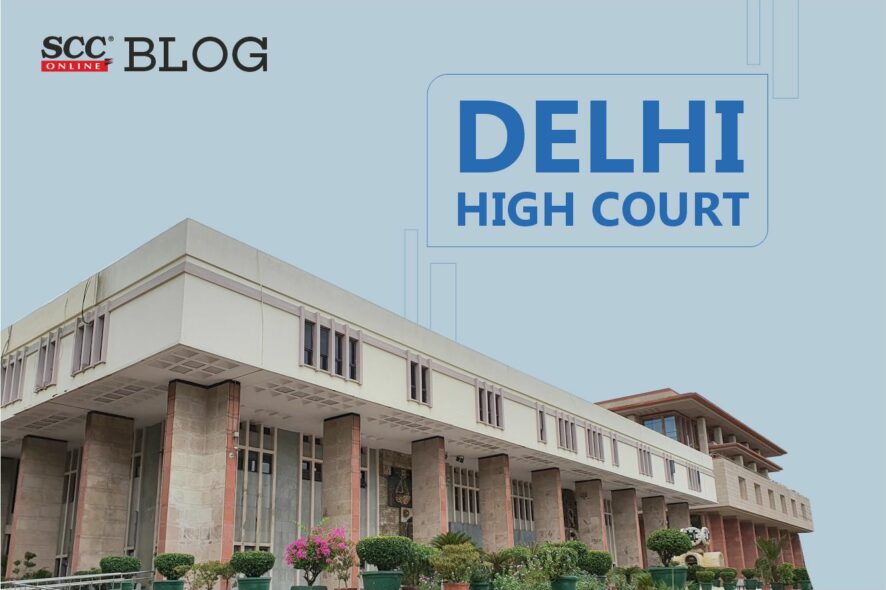Delhi High Court: In a case filed by the Resolution Professional of Era Infra Engineering Limited (EEIL) being admitted to insolvency proceedings under the provisions of the IBC, challenging the attachment orders issued by Directorate of Enforcement (ED) and raising a pertinent question that what will be the impact of a moratorium issued under Section 14 of the Insolvency and Bankruptcy Code, 2016 (IBC) would have on the powers of the Enforcement Directorate to enforce an attachment under the provisions of the Prevention of Money Laundering Act, 2002 (PMLA), Yashwant Verma, J., held that the provisions of the PMLA are not liable to be read as being subservient to the moratorium provision comprised in Section 14 of the IBC.
The Court noted that the intent and objective of the moratorium provision incorporated in the IBC is that it principally subserves the purpose of preservation of the assets of the debtor, enables all stakeholders to explore the possibility of its revitalization and if ultimately those efforts fail, for its expeditious liquidation. Thus, the purpose of a moratorium is clearly distinct from the purpose and objectives of attachment action taken under the PMLA. PMLA is not concerned with the recovery or enforcement of a debt. Proceedings for attachment that may be initiated in terms thereof cannot by any stretch of imagination be viewed as being akin to an action for enforcement or recovery of a debt.
Placing reliance on Nitin Jain Liquidator of PSL Limited v. Enforcement Directorate, 2021 SCC OnLine Del 5281, the Court noted that the moratorium would not prevent the authorities under the PMLA from exercising the powers conferred by Sections 5 and 8 notwithstanding the pendency of the CIRP.
The Court observed that while proceeding to attach the tainted property, the respondents are not in essence effacing the property rights that may be claimed by an individual. It is a symbolic taking over of the custody of the property and for its preservation till such time as the proceedings that may be initiated under the PMLA come to a conclusion. Thus, attachment is not liable to be viewed as an effacement of all rights that may exist or be claimed to be exercisable in respect of a property.
The Court stated that it is essentially an action aimed at bringing into the control of a court or an authority, property over which multiple claims may exist. In any case, since the act of attachment does not result in the effacement of rights in property, it would clearly stand and survive outside the scope of a moratorium or an action relating to an action in respect of a debt due or payable.
The Court opined that the however, both the orders under Sections 5 and 8 remain orders of attachment. The passing of those orders neither result in confiscation of those properties nor do those properties come to vest in the Union Government upon such orders being made. Thus, attached property, thus, comes to vest in the Union Government only upon the passing of such an order as may be passed by the special Court either under sub-Sections 5 or 7 of Section 8 or Sections 58-B or Section 60(2)(a). This concludes that the provisional attachment of properties would in any case not violate the primary objectives of Section 14 of IBC.
The Court observed that attachment under the PMLA, as was noted hereinabove, is not an attachment for debt but principally a measure to deprive an entity of property and assets which comprise proceeds of crime. Attachment under the PMLA does not result in an extinguishment or effacement of property rights. It is essentially a fetter placed upon the possessor of that property to deal with the same till such time as proceedings under the aforesaid enactment come to a definitive conclusion on the question of confiscation. Thus, since the act of attachment does not result in the effacement of rights in property, it would clearly stand and survive outside the scope of a moratorium or an action relating to an action in respect of a debt due or payable.
The Court further observed that both IBC and the PMLA are special statutes in the generic sense; they both seek to subserve independent and separate legislative objectives. The subject matter and focus of the two legislations is clearly distinct. When faced with a situation where both the special legislations incorporate non obstante clauses, it becomes the duty of the Court to discern the true intent and scope of the two legislations.
Thus, the Court concluded that the statutory injunct against the invocation or utilization of the powers available under the PMLA was thus ordained to come into effect only once the trigger events envisaged under Section 32-A IBC came into effect. The Legislature thus in its wisdom chose to place an embargo upon the continuance of criminal proceedings including action of attachment under the PMLA only once a Resolution Plan were approved or a measure in aid of liquidation had been adopted.
Thus, the Court held that the power to attach under the PMLA would not fall within the ken of Section 14(1)(a) of the IBC.
[Rajiv Chakraborty Resolution Professional of EEIL v. Directorate of Enforcement, 2022 SCC OnLine Del 3703, decided on 11-11-2022]
Advocates who appeared in this case :
Mr. Abhinav Vashisht, Sr. Adv. with Mr. Shivank Diddi, Advocate for Petitioner;
Mr. Zoheb Hossain, SC for ED with Mr. Vivek Gurnani and Mr. Kavish Garach, Advocates for Respondents.
*Arunima Bose, Editorial Assistant has reported this







